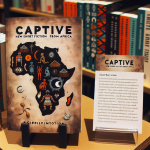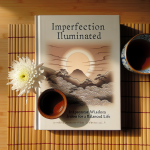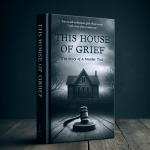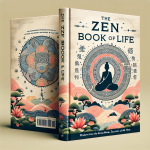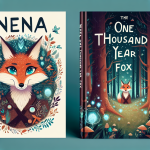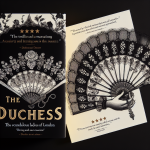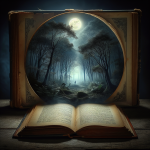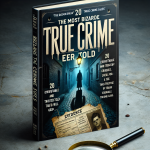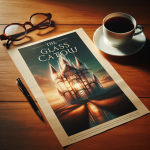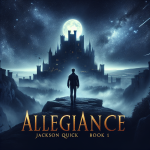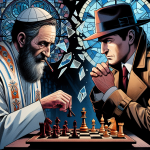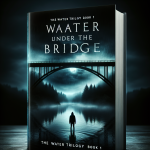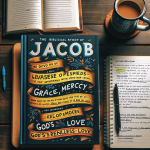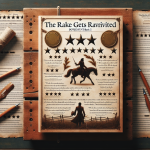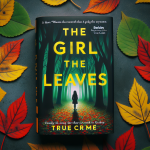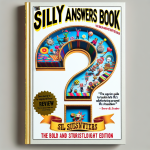As an Amazon Associate I earn from qualifying purchases.
Where the Lost Wander: A Novel – An Unforgettable Journey Through Love, Loss, and the Heart of the American Frontier
In “Where the Lost Wander: A Novel,” historical fiction aficionados are treated to a soul-stirring odyssey that intricately weaves the harrowing journey of pioneers with the poignant tale of love and loss. From the very first page, the story plunges readers into the tumultuous era of westward expansion, capturing the essence of an epic adventure fraught with emotional drama and high-stakes survival. Uncovering the trials and tribulations of forging a new life on the American frontier, this novel addresses the universal human themes of hardship, resilience, and undying love, all set against the backdrop of a raw, untamed wilderness.
As the narrative unfolds, readers become deeply invested in the characters' lives, exploring the richness and intensity of their experiences. The story not only provides an evocative portrayal of the hardships faced during the pioneer journey but also delves into the complexities of human relationships and the inexorable forces of fate. The novel's significance lies in its ability to bring historical events to vivid life while solving the problem of our connection to the past, inviting readers to experience a time and place where every decision could mean the difference between life and death. Through its meticulous attention to detail and compelling emotional arcs, “Where the Lost Wander” ensures an engaging read that resonates long after the final page is turned.
Plot
Set against the harsh backdrop of the American West in the mid-1800s, “Where the Lost Wander: A Novel” follows the perilous journey of a group of pioneers traveling along the Oregon Trail. Naomi May, a young widow, joins this caravan in search of a new beginning. Alongside her is John Lowry, a half-Pawnee man torn between two worlds. Their fates intertwine as they face natural calamities, treacherous territories, and encounters with various Native American tribes. The plot unfolds through trials and tribulations that test the limits of their endurance and spirits, creating a captivating saga of survival, hope, and unwavering human determination.
Characters
The characters in “Where the Lost Wander” are richly drawn and multifaceted. Naomi May is portrayed as a resilient and compassionate character, grappling with the loss of her first husband while trying to navigate her new life on the trail. John Lowry is introspective and deeply conflicted, wrestling with his mixed heritage and the prejudices he faces from both white settlers and Native Americans. The character dynamics extend to a wide cast, including Naomi’s supportive family and other members of the wagon train, each with their own backstories and hardships, adding layers to the narrative.
Writing Style
Amy Harmon employs a lyrical and evocative writing style that beautifully captures both the grandeur and harshness of the American frontier. The narrative is enriched with vivid descriptions, bringing the landscapes and scenes of pioneer life to life. Harmon deftly combines historical accuracy with emotional depth, using prose that is both accessible and profoundly moving. Dialogues are authentic and period-appropriate, fleshing out the characters’ voices and enhancing the overall realism of the story.
Setting
The setting of “Where the Lost Wander” is meticulously crafted to reflect the stark and often unforgiving reality of the mid-19th century American West. The story traverses the expansive, untamed wilderness of the Great Plains, through rugged mountains and across vast deserts, mirroring the unpredictable and often treacherous conditions faced by the pioneers. This historical setting is both a physical and metaphorical landscape, reflecting the immense challenges and uncertainties of the journey, while also highlighting moments of breathtaking beauty and profound connection to nature.
Unique Aspects
One of the unique aspects of “Where the Lost Wander” is its focus on the multicultural dimensions of the American frontier. The novel provides a sensitive and nuanced portrayal of Native American experiences and perspectives, particularly through John Lowry's character. The blending of historical detail with fictional narrative allows for a rich exploration of themes such as identity, belonging, and cultural integration. Additionally, the story's foundation in actual historical events and practices offers readers an educational glimpse into the pioneer era, while still delivering an emotionally compelling and personal tale.
Historical Fiction
Historical Fiction as a genre seeks to reconstruct historical periods, people, and events through the lens of fictional narratives. “Where the Lost Wander” excels in this regard by maintaining adherence to historical details while weaving a compelling story. Amy Harmon did extensive research to accurately depict the conditions of the Oregon Trail in the 1850s, reflecting the technologies, languages, and social norms of the time. This genre allows readers to experience history in a more intimate and emotionally resonant way, enhancing their understanding of the era beyond what traditional historical texts might offer.
Pioneer Journey
The pioneer journey epitomized in the novel is marked by relentless hardship and relentless determination. It provides an immersive experience into the daily lives and struggles of those who sought new beginnings in uncharted territories. The characters' experiences of dealing with scarce resources, building makeshift camps, and establishing a semblance of normal life under extreme conditions are authentically portrayed. The journey also serves as a crucible, shaping identities and fostering relationships that are strengthened by shared adversity, encapsulating the essence of the pioneering spirit.
Love and Loss
Love and loss are central themes in “Where the Lost Wander,” portrayed through the evolving relationship between Naomi and John. Naomi's initial grief over her husband's death contrasts sharply with the tentative and complicated romance that develops between her and John. Their journey is punctuated by moments of deep connection and heart-wrenching separation, highlighting the vulnerabilities of opening one's heart in uncertain times. These emotional layers add depth to their characters and make their story one of resilience and hope amidst the inevitabilities of loss.
Emotional Drama
The emotional drama in the novel is intense and multifaceted, capturing the raw, often tumultuous feelings of the characters as they navigate their perilous journey. From Naomi's grappling with grief and new love, to John's struggle with identity and acceptance, the emotional arcs are complex and engaging. Amy Harmon's ability to depict the profound fears, desires, and longings of her characters enhances the narrative, making readers deeply invested in their fates. These dramas underscore the broader narrative, highlighting the psychological and emotional costs of the frontier life.
Epic Adventure
“Where the Lost Wander” is fundamentally an epic adventure, characterized by its vast scope and relentless pace. The journey along the Oregon Trail is fraught with danger and discovery, from fording rivers to battling fierce weather conditions and encounters with both wildlife and hostile forces. This epic nature creates a constant undercurrent of tension and excitement, drawing readers into the unpredictability and grandeur of the pioneering expedition. The highs and lows, triumphs and tribulations, of this adventure are vividly brought to life, making the novel an exhilarating read.
Historical Fiction
Pros of Historical Fiction
Historical fiction offers readers an immersive experience into time periods that may be vastly different from their own. It allows users to learn about history in an engaging narrative format, often making events and epochs come alive with vivid detail. Educational elements add depth and understanding, fostering a connection to past cultures, societies, and events that can be both informative and entertaining.
Cons of Historical Fiction
However, historical fiction can sometimes suffer from inaccuracies or anachronisms, leading to a distorted understanding of true events. Authors may take creative liberties that romanticize or alter historical facts for the sake of the story, potentially misleading readers. The emphasis on historical detail can also slow down the pacing, making it less appealing to those who prefer fast-paced narratives.
Pioneer Journey
Pros of Pioneer Journey
Pioneer journey stories evoke a sense of adventure and exploration, often depicting the resilience and determination of individuals in untamed landscapes. These narratives can inspire readers with tales of survival and human ingenuity, creating a strong emotional connection to the characters and their struggles. They also highlight the historical context of expansion and migration, enriching the reader's understanding of human endeavors and challenges.
Cons of Pioneer Journey
Conversely, pioneer journey tales can sometimes over-glorify the past, minimizing the hardships and ethical issues, such as the impact on indigenous populations. The focus on rugged individualism can skew perceptions of historical events, neglecting the collaborative efforts or systemic challenges involved. Additionally, the repetitive nature of survival and travel themes can become monotonous, possibly diminishing reader engagement over time.
Love and Loss
Pros of Love and Loss
Love and loss themes resonate deeply with readers, offering a cathartic experience that mirrors their own emotional journeys. These stories provide a canvas for exploring human vulnerability, strength, and transformation, making characters relatable and memorable. The emotional depth can lead to greater investment in the narrative, fostering empathy and a profound connection that enhances the overall reading experience.
Cons of Love and Loss
On the downside, love and loss can sometimes be portrayed in overly melodramatic or clichéd ways, reducing their impact. Predictability in such narratives can also detract from the immersive experience, making the plot feel formulaic. The intense emotional focus might alienate readers looking for lighter or more action-oriented storytelling, limiting the audience's appeal. Readers may also find the recurring themes of suffering and heartache overwhelming.
Emotional Drama
Pros of Emotional Drama
Emotional drama adds depth and intensity to a narrative, allowing readers to engage with complex characters and situations. It provides a rich, textured reading experience that can be both provocative and comforting. By delving into the intricacies of human emotions and relationships, these stories often offer profound insights into human nature, making them particularly resonant and thought-provoking for the reader.
Cons of Emotional Drama
However, emotional drama can sometimes venture into overly sentimental or exaggerated territory, which might feel manipulative or tiresome to some readers. The focus on internal conflict can slow the pacing and detract from other plot elements, potentially making the story feel unbalanced. For readers seeking action or lighter themes, emotional drama may appear heavy-handed or less engaging, limiting its broad appeal.
Epic Adventure
Pros of Epic Adventure
Epic adventure stories captivate readers with thrilling exploits, grand quests, and high stakes, providing an exhilarating reading experience. The expansive scope and dynamic settings stimulate the imagination, holding the reader’s attention with relentless action and awe-inspiring moments. These narratives foster escapism, allowing readers to immerse themselves in fantastical worlds where the extraordinary becomes possible, making them highly entertaining.
Cons of Epic Adventure
On the flip side, epic adventures can sometimes prioritize spectacle over character development, leading to shallow character arcs that fail to resonate emotionally. The complex plots and numerous subplots typical of epic tales may overwhelm or confuse readers, detracting from their enjoyment. Additionally, the relentless pace can sometimes leave little room for reflective moments, making it difficult for the reader to connect deeply with the story's themes.
FAQ
What defines historical fiction?
Historical fiction is a literary genre in which the story primarily takes place in a specific time period, often one that is significantly distant from the present. Authors meticulously research the era to ensure historical accuracy while weaving a fictional narrative that captivates readers.
What elements make a pioneer journey compelling?
A compelling pioneer journey often includes detailed descriptions of journey hardships, realistic and relatable characters, personal growth through adversity, interactions with diverse cultures, and the indomitable spirit of exploration and survival.
How is love and loss portrayed in literature?
Love and loss in literature are depicted through the development of deep emotional connections between characters, significant events that alter relationships, and the portrayal of grief and healing. Writers may explore the complexities of human emotions and the enduring impact of loss on an individual's life.
What makes emotional drama effective in a story?
Effective emotional drama relies on well-developed characters, relatable conflict, and authentic dialogue. It should provoke empathy and connect readers to the characters’ experiences, bringing out universal themes of human resilience, vulnerability, and connection.
What are the characteristics of an epic adventure?
An epic adventure is characterized by grand and challenging quests, larger-than-life heroes, significant obstacles, detailed world-building, and a journey that emphasizes bravery, wisdom, and growth. The narrative often spans across various settings and includes a mix of thrill, danger, and triumph.
How do authors balance historical accuracy with creative storytelling?
Authors balance historical accuracy with creative storytelling by conducting thorough research to ensure a solid historical foundation. They then infuse fictional elements that enhance the plot and characters. The goal is to maintain authenticity while crafting an engaging and imaginative narrative.
Why do readers enjoy stories about pioneer journeys?
Readers enjoy stories about pioneer journeys because they represent adventure, resilience, and the human spirit's capacity to overcome significant challenges. These stories offer a glimpse into the struggles and triumphs of early settlers, providing a sense of nostalgia and appreciation for past eras.
How can themes of love and loss deepen a narrative?
Themes of love and loss deepen a narrative by adding emotional complexity and grounding the story in universal human experiences. These themes can drive character development, create tension, and evoke a range of emotions, making the narrative more compelling and relatable to readers.
What role does authenticity play in emotional drama?
Authenticity in emotional drama is crucial as it ensures that characters’ feelings and actions resonate with readers. Genuine emotions, plausible reactions to events, and honest depictions of struggles make the drama believable, fostering a deeper connection between the readers and the narrative.
How do epic adventures reflect the hero’s journey?
Epic adventures often follow the hero's journey archetype, which includes stages such as the call to adventure, crossing the threshold, facing trials, a crisis point, and a triumphant return. This structure showcases the hero’s transformation, illustrating how adversity leads to personal growth and ultimate victory.
In conclusion, “Where the Lost Wander: A Novel” by Amy Harmon stands as a testament to the evocative power of historical fiction, masterfully weaving together themes of a pioneer journey, love and loss, emotional drama, and epic adventure. This novel isn't merely a recounting of days gone by; it is a vivid reimagining that breathes life into the past, allowing readers to traverse the rugged Oregon Trail alongside its compelling characters.
At the heart of “Where the Lost Wander” is a poignant exploration of the human spirit's resilience. The story of Naomi May, a young widow seeking a fresh start, and John Lowry, a half-Pawnee man teetering between two worlds, captures the essence of hope and courage amidst the relentless hardships of pioneer life. Their love story is not just an emotional anchor for the plot but also a symbol of the profound connections that can arise in the face of adversity. Harmon's portrayal of their relationship is a delicate balance of tenderness and strength, illustrating the transformative power of love against a backdrop of loss and sorrow.
Moreover, the novel's meticulous attention to historical detail is a standout feature that enriches the reader's experience. Harmon’s immersive narrative invites readers to experience the physical and emotional toll of the journey westward, from the threat of disease and scarcity to the unpredictability of conflicts and the daunting landscape itself. This authenticity not only builds a believable setting but also engenders a deeper appreciation for the trials and triumphs of those who undertook such a perilous quest.
“Where the Lost Wander” is a valuable choice for readers seeking more than just entertainment. Its richly drawn characters offer poignant insights into human nature, resilience, and the quest for belonging. The emotional depth and historical accuracy provide a meaningful context that elevates it beyond a typical historical romance. By combining a gripping narrative with heartfelt emotional drama, Amy Harmon delivers a reading experience that is both enlightening and profoundly moving.
For readers drawn to epic adventures and the intricate tapestry of human emotions, “Where the Lost Wander” promises an unforgettable journey. Its pages are filled with lessons of love, loss, and the indomitable spirit of those who dared to dream and wander. This novel is a worthy addition to any bookshelf, offering not only a window into the past but also timeless reflections on the human experience.
Amazon and the Amazon logo are trademarks of Amazon.com, Inc, or its affiliates.







